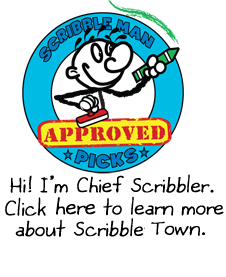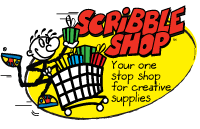Scribble Artist Interview with Mia Meri!

Buffy as a fantasy character by Mia Meri
Mia Meri (MM): My name is Mia Meri, I’m a 35 year old woman living in Helsinki, Finland. I used to be a software designer but now I’m studying to become an Egyptologist at the University of Helsinki.
ST: What is Egyptology and what sparked that interest?
MM: Egyptology is the study of Ancient Egypt from prehistoric times, even before they built the pyramids of Giza (c. 2600 BC), up until Cleopatra VII died in 30 BC. I don’t know when I exactly became interested in Ancient Egypt. I think I’ve been that way since the time I can remember. As a child my invisible friend was Anubis, the jackal-headed god of mummification, and I copied mummification scenes with watercolors with great care as a kid. Since I liked dogs a lot anyway, Anubis was my favourite god, and I have always liked how the pencil flows when you draw his head and the way in which he was drawn by the Egyptians.
In fact it’s quite funny I used to do that already as a child since I’d like to make epigraphy for living, which basically means copying for example tomb walls by hand. It’s very important to copy the Ancient Egyptian building walls because they might get destroyed in time in earthquakes or the sand might erode the traces of paint away. Also the Egyptian reliefs are quite hard to photograph sometimes so drawing them by hand is the only way to get exact copies of the wall drawings even today. Below is a copy of an Egyptian wall painting I’ve done for Scribble Town.

Egyptian drawing for Scribble Town by Mia Meri
ST: What got you started creating, scribbling, and making stuff?
MM: I have always liked drawing and arts in general, and my whole family is quite artistic. My mom restores old dolls, my sister sews, my aunt is the best knitter I know, my dad is good at building, and I draw and do computer graphics. My mom always encouraged me at drawing and took me to arts classes meant for adults and I participated in the courses with them as the only child in the group. That’s how I learned to paint with oil colours and water colour [laveeraus] technique and it gave me the courage to start experimenting on my own. My mom also took me to art galleries and art museums a lot and our home was full of art books. I studied them on my own and tried many different art styles, and quite soon found the style that I like and which I have been thriving to achieve ever since then. For example I had a a period when I tried cubism after Picasso. I never found the strength in me to try the strong expressionism of Van Gogh. But in the end I found myself copying Rembrandt’s works. Of course I was only in elementary school age so my drawings and paintings weren’t even close to the masters, but I learned something new all the time like how to draw hands and how to draw eyes in detail.
Later I got interested in Marvel superhero comics and I especially liked the dynamic poses of the heroes. In classic art people usually have relaxed poses, but in superhero comics the people are always on the move and stretching their muscles. I especially liked to copy Jack Kirby’s style, because he had clear lines. Also, since superheroes usually have skintight clothing, they are a really good source to learn how the human body is built. From X-Men comics I learned how muscles attach to bones and how they bulge when you move. I also studied my own muscles from a mirror, trying to analyse how and which muscles bulged as I moved my hand in a certain way. I was still in elementary school at this time.

The first one is a drawing I made from a trip to Turkey my mom and I made when I was still in Elementary school. The drawing is not that old, it's based on one photo we took there. By Mia Meri.
I think one part of the thing why I studied drawing almost analytically as a child was that I was quite shy as a child and therefore I had a hard time making friends. I spent a lot of time on my own, but it gave me the time to really stop and think about what I was doing. I had the time to try stuff on my own and to really look and study all the paintings and pictures in the art books.
Currently I don’t have that time to concentrate on drawing and I have noticed I’m not as good at drawing as I used to be ten years ago. But I still do a lot off scribbling. I need to be doing something with my hands all the time or I get very anxious and start biting my nails or find it hard to concentrate. For example if I’m sitting in a class I have to draw all the time I’m not writing down notes or my mind starts to wonder. I know some people think it’s rude to draw while they are giving a lecture as they think it’s because I’m not listening, but it’s in fact quite the opposite! If you don’t see me drawing or writing, then I’m not listening and quite soon will fall asleep.
Also, through my studies in Egyptology, I have to draw a lot since we have to know how to write with hieroglyphs and, as you might know, all those hieroglyphs are in fact drawings. For example my name “Mia” is written by drawing an owl (M), a flowering reed (I), a hawk (A) and finally a sitting female to determine that I am a female. The most common hieroglyphs are quite easy to draw, but there are some signs where you really have to concentrate, for example the determinative for “army” has a sitting man holding a bow and that’s a lot to draw quickly in a small space.
ST: Your mom is quite a lady! You are lucky to have had such a nurturing family figure in your life. Has anyone or anything in particular inspired you or inspires you now?
MM: One of the problems I’ve always had with drawing is that I have the worst imagination when it comes to what I should draw. Even though I do have a vivid imagination my biggest problem is that I can’t come up with what to draw next. My biggest source of inspiration are roleplaying games. Roleplaying games are a way of joint storytelling. One of us makes up a setting and the rest of us pretend to be characters, who go on an adventure in that setting. The adventures we experience in roleplaying games inspire my imagination. I always draw when I’m playing. When I hear of new people we meet in our journeys I soon start drawing them. The back stories of my characters and the events that we face often end up in my drawings.

D&D by Mia Meri. Here is a Scribble from a game we played yesterday. Our team faced seemingly overwhelming group of enemies, but luckily we were victorius!
ST: What is your favorite place to create?
MM: I really don’t have a preferable place to create. Well, home is good since I have everything I need here. But basically any place is good enough. I have drawn in meetings and bars, at restaurants, at cafes. Any place works for me as long as you can sit there for a long time and can get food and drinks if need be and have a toilet somewhere.
I think more important is the setting and the mood. My drawings quite often reflect my inner feelings, and thus when I draw during roleplaying games – since it’s so much fun and we laugh a lot – I tend to draw comic images. When I draw ancient Egyptian subjects I usually put on the Cleopatra movie with Elizabeth Taylor on the background. If I need to draw a sci-fi themed image I put on Bladerunner or its soundtrack.
But most importantly you need to have time for drawing. You can’t force a drawing except if it’s a technical drawing like those copies I make of tomb walls. But if I’m drawing just out of my own head I have to have time. I usually start by just scibbling something and usually end up drawing numerous images on numerous papers and throwing them away before the drawing I want to make comes out. Just like before exercise you need to warm up first, before drawing you need to get your brain, imagination and hands warmed up. Trying to force an image out is painful, but when you give the drawing a chance to form itself on the paper it’s the best feeling ever. I often say the drawings I made drew themselves. You see, sometimes when I start to draw something that I have in my mind I notice the drawing I’m making doesn’t work for that idea, but it might become something else, even better than the original idea. Sometimes I have accidentally drawn my friends. Of couse the more you draw the more control you will have over your own images and can direct the way they will look.
ST: Please tell us more about Nörttitytöt. What is the group about and how are you involved?
MM: I am involved with a geek women’s community called “Nörttitytöt” (“geek girls”) here in Finland. I am one of three chief-in-editors for the blog (http://geekgirls.fi) where we have 80 writers, who take turns to write about various nerdy subjects. I’m specialised in the games section including video, board and card games. The blog is mostly in Finnish but we have occasional English articles there, too.
ST: Thank you for being so open about your childhood, inspirations, and passions. That, in itself, is so encouraging for all of us to hear. Mia has given us a fun activity to do on the Scribble Shop Blog ![]()
Learn how to draw your name in hieroglyphs!
http://www.scribbleshop.com/content/draw-your-name-using-hieroglyphs-mia-meri
Please send in your new name to us at .












